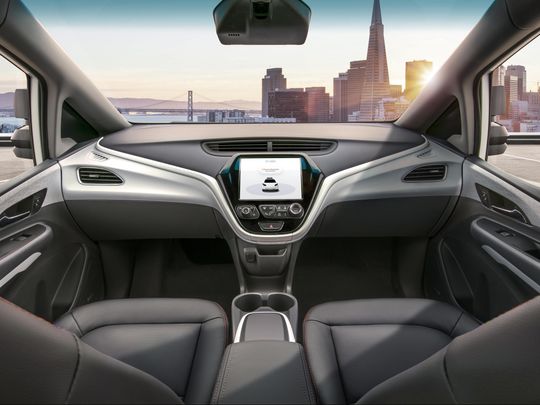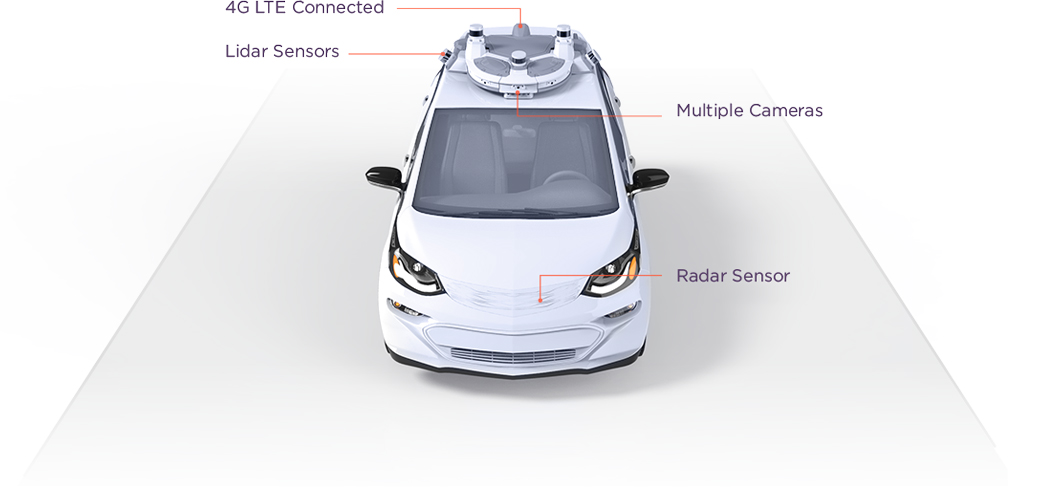When General Motors unveils its fleet of fully automated, ‚Äúself-driving‚Äù vehicles next year, they will include technology developed by —«÷ތެΠalum Lute Maleki. Maleki‚Äôs micro lidar sensor technology, which he developed at his startup company Strobe, is a key component that is helping propel GM‚Äôs Cruise Automation to the front of the rapidly evolving autonomous vehicle industry.
Maleki is a senior distinguished engineer at Cruise Automation. He is considered a leading researcher and expert in lidar.
Lidar technology is similar to radar but uses laser light instead of radio frequency to survey and measure distances to objects. Lidar systems equip vehicles with the sensor ability to distinguish trees from shadows, Maleki said.
‚ÄúLidar is like the eyes of the car to see where to navigate, what to avoid, how to move, all of that,‚Äù said Maleki, who grew up in Iran and came to the United States to attend college. He earned a master‚Äôs degree and a doctorate in physics from —«÷ތެÎ.
Lidar technology has been around for years; however, Maleki’s company, Strobe, was able to create a market-friendly version that allows the automotive industry to reproduce it less expensively, he said.
“The requirement for autonomous vehicles are a number of parameters, like seeing how far it can see and how well it can tell objects apart; and yet have a sensor that is small and can be produced low-cost,” Maleki said. “Ours is a technology that can meet those requirements.”
General Motors bought Maleki’s Pasadena, Calif.-based company in 2017. Cruise, will use Strobe’s lidar laser sensors as part of its automated driving system. In October, Honda announced it was investing $2.7 billion in a partnership with GM to develop a fleet of autonomous vehicles that are expected to debut in 2019.
Although GM is expected to bring self-driving cars to market next year, buying one from a local dealership is probably still years away, according to the federal Department of Transportation’s National Highway Traffic Safety Administration (NHTSA), which oversees transportation standards.
Many vehicles sold today—and being driven daily—has some level of “automated” assistance, such as a “ding” to remind us to buckle our seatbelt, rearview cameras, blinkers to let us know a vehicle is passing or lane keeping system in which a system automatically takes steps to ensure a vehicle stays in the correct lane.
The vehicles that GM is looking to mass-produce would be fully automated in which there are no steering wheels, or pedals or human driver. This, according to the U.S. Department of Transportation’s National Highway Traffic Safety Administration (NHTSA), amounts to a Level 5 automation.
 NHTSA, based on a similar standard developed by the Society of Automotive Engineers, describes the levels of automation from Level 0, where a human does all the driving to a Level 5 in which humans are simply passengers and the driving is performed by an automated system.
NHTSA, based on a similar standard developed by the Society of Automotive Engineers, describes the levels of automation from Level 0, where a human does all the driving to a Level 5 in which humans are simply passengers and the driving is performed by an automated system.
GM is piloting the use of such cars in several cities, including San Francisco, Maleki said.
“If you come to San Francisco, we will put you in a car which is autonomous, that is self-driving,” he said.
GM has declared its mission for developing self-driving vehicles as a way to reduce traffic congestion by decreasing the number of vehicles on the road. The automotive giant has said it plans to use the fully automated vehicles as part of an on-demand service, similar to Uber or Lyft.
Maleki first began researching Lidar technology while working at NASA’s Jet Propulsion Laboratory in California from 1979 to 2007. In 2000, he founded OEwaves, a technology company that further developed the radar and communications research undertaken by scientists at the NASA lab.
Maleki was president and CEO of OEwaves when he was awarded the C.B. Sawyer Memorial Award by the tech organization IEEE in 2013. The award is given in recognition of entrepreneurship or leadership in the frequency control community; or outstanding contributions in the development, production or characterization of resonator materials or structures.
 Maleki thinks the autonomous vehicle will have an impact far beyond the car industry. He foresees it changing the way society plans and operates in such areas as land development.
Maleki thinks the autonomous vehicle will have an impact far beyond the car industry. He foresees it changing the way society plans and operates in such areas as land development.
“Right now your car is not used 92 percent of the time, it’s just sitting there taking up parking spaces,” he said. “Once we have autonomous vehicles, we can literally turn parking spaces into parks and things like that.”





